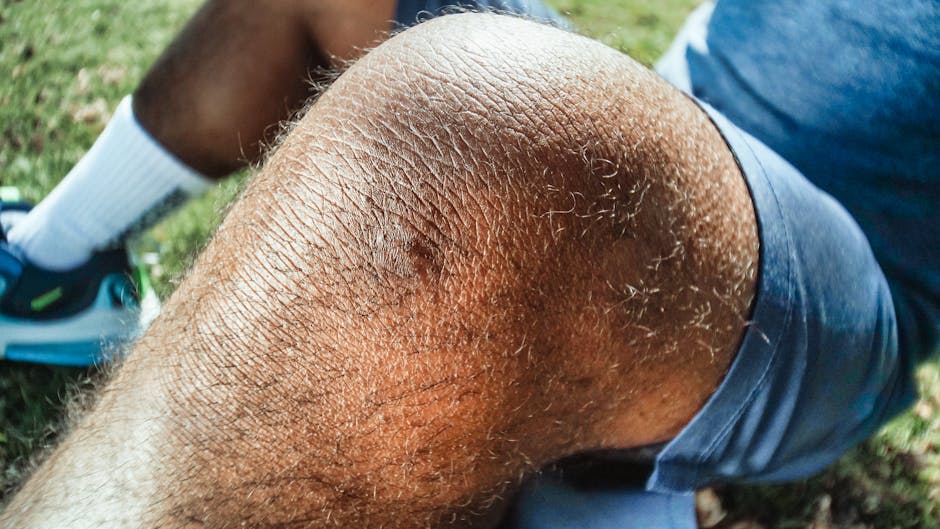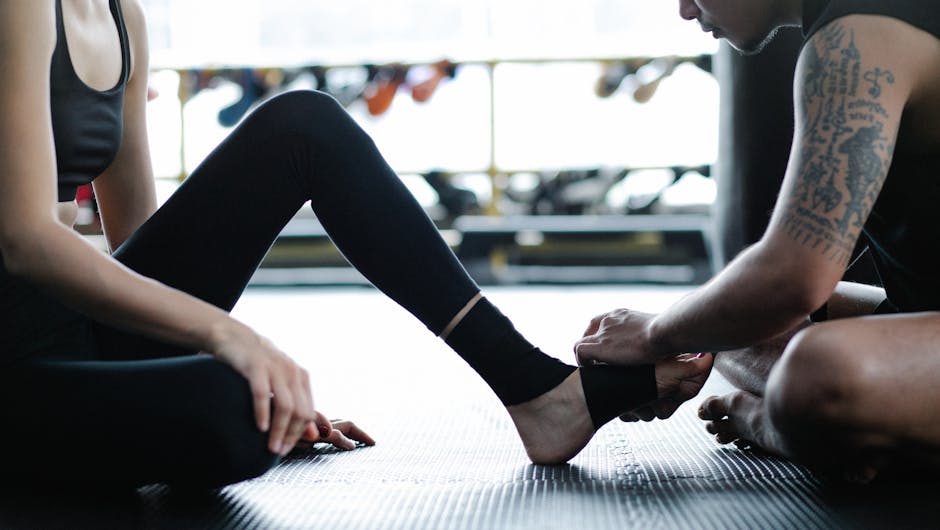Preventing Joint Injuries in Sports: A Comprehensive Guide
Sports can be exhilarating, challenging, and immensely satisfying. They push our bodies to the limits, testing our strength, agility, and endurance. However, with the thrill of sports also comes the risk of injuries, particularly to our joints. Joint injuries are not only painful but can also have long-lasting consequences, impacting our ability to participate in the activities we love. In this comprehensive guide, we will delve into the world of preventing joint injuries in sports, exploring the various strategies, techniques, and best practices to keep our joints healthy and strong.
The Anatomy of Joints: Understanding the Basics

Before we delve into preventing joint injuries, it’s essential to have a basic understanding of the anatomy of joints. Joints are the connections between bones that allow for movement and flexibility. They are lined with cartilage, a smooth, rubbery tissue that cushions the ends of bones and helps them glide smoothly against each other. Ligaments hold the bones together, while tendons connect muscles to bones, providing stability and support.
When we engage in sports, our joints are subjected to various forces and stresses, increasing the risk of injuries. Understanding how joints work and the different types of joint injuries that can occur is crucial for effective prevention strategies.
Common Types of Joint Injuries in Sports

Joint injuries can encompass a wide range of issues, from minor sprains and strains to more severe conditions like dislocations and fractures. Some of the most common types of joint injuries seen in sports include:
Sprains
Sprains occur when the ligaments that connect bones are stretched or torn, often due to sudden twisting or impact. Ankle sprains, for example, are prevalent in sports like basketball and soccer, where quick direction changes and jumps put pressure on the ankle joint.
Strains
Strains involve the stretching or tearing of muscles or tendons, typically caused by overuse or improper technique. For instance, tennis elbow is a common strain injury among tennis players, resulting from repetitive motions that strain the tendons in the elbow joint.
Tendonitis
Tendonitis is the inflammation of a tendon, usually due to repetitive movements or overloading of the joint. It can cause pain, swelling, and limited range of motion, affecting performance in sports that involve repetitive motions, such as swimming or baseball.
Dislocations
Dislocations occur when the bones in a joint are forced out of their normal position, often due to a sudden impact or fall. Shoulder dislocations are common in sports like rugby or wrestling, where players are at risk of a direct blow to the shoulder joint.
Cartilage Tears
Cartilage tears, such as meniscus tears in the knee, are common in sports that involve twisting or pivoting movements. These injuries can cause pain, swelling, and instability in the joint, affecting an athlete’s ability to perform at their best.
Preventive Measures for Joint Injuries

Preventing joint injuries in sports requires a comprehensive approach that involves proper training, conditioning, equipment, and technique. By taking proactive steps to protect your joints, you can reduce the risk of injuries and enjoy your favorite sports safely. Here are some key preventive measures to consider:
Warm-Up and Cool Down
Before engaging in any physical activity, it’s essential to warm up your muscles and joints to increase blood flow and flexibility. A proper warm-up can help prevent injuries by preparing your body for the demands of sports. Similarly, cooling down after exercise can help reduce muscle soreness and stiffness, promoting recovery and injury prevention.
Strength Training
Strength training plays a crucial role in preventing joint injuries by improving muscle strength, stability, and endurance. By strengthening the muscles around your joints, you can provide added support and protection, reducing the risk of strains, sprains, and other injuries. Focus on exercises that target the muscles surrounding your joints, such as squats, lunges, and planks.
Flexibility and Mobility Exercises
Flexibility and mobility exercises are essential for maintaining joint health and preventing injuries. Stretching exercises can help improve your range of motion, reduce muscle tightness, and enhance joint flexibility. Incorporate dynamic stretches, yoga, or Pilates into your routine to keep your joints supple and resilient.
Proper Technique
Using proper technique is crucial in sports to prevent joint injuries. By mastering the correct form and mechanics for each movement, you can reduce the risk of overloading your joints and causing unnecessary strain. Work with a coach or trainer to ensure you are using proper technique in your sport and address any issues that may put your joints at risk.
Gradual Progression
When starting a new sport or increasing the intensity of your workouts, it’s essential to progress gradually to allow your body to adapt and avoid overuse injuries. Sudden spikes in training volume or intensity can put excessive strain on your joints, leading to injuries. Listen to your body, and give yourself time to build up your strength and endurance safely.
Proper Gear and Equipment
Wearing the right gear and equipment is vital for preventing joint injuries in sports. Make sure you have the appropriate footwear, protective padding, and supportive braces to reduce the impact on your joints and provide stability during physical activity. Replace worn-out gear and equipment regularly to ensure they continue to offer adequate protection.
Nutrition and Hydration
Proper nutrition and hydration are essential for maintaining joint health and preventing injuries. A balanced diet rich in nutrients like calcium, vitamin D, and omega-3 fatty acids can support bone and joint health. Stay hydrated before, during, and after exercise to keep your joints lubricated and reduce the risk of inflammation and stiffness.
Case Studies: Success Stories in Preventing Joint Injuries

While joint injuries are common in sports, many athletes have successfully implemented preventive measures to protect their joints and prolong their careers. Let’s explore some inspiring case studies of athletes who have prioritized joint health and injury prevention:
Case Study 1: Serena Williams
Serena Williams, one of the greatest tennis players of all time, has attributed her longevity in the sport to a comprehensive approach to injury prevention. Williams focuses on strength training, flexibility exercises, and proper technique to keep her joints healthy and resilient. By incorporating cross-training and rest into her schedule, Williams has been able to prevent major joint injuries and continue competing at the highest level.
Case Study 2: LeBron James
LeBron James, a basketball superstar known for his durability and athleticism, credits his commitment to preventive measures for his extended career in the NBA. James prioritizes strength training, flexibility work, and recovery strategies to protect his joints from the high-impact demands of basketball. By investing in his joint health, James has been able to stay injury-free and maintain peak performance throughout his career.
Common Misconceptions About Preventing Joint Injuries
Despite the importance of preventing joint injuries in sports, there are several misconceptions that can hinder athletes’ efforts to protect their joints. Let’s debunk some common myths surrounding joint injury prevention:
Myth: Rest is Sufficient for Recovery
While rest is essential for recovery, it is not always sufficient to prevent joint injuries. Active recovery, including mobility work, stretching, and low-impact exercises, can help maintain joint health and prevent stiffness and weakness. Incorporate a variety of recovery strategies into your routine to support your joints and promote healing.
Myth: Pain is Normal in Sports
While some discomfort or soreness may be expected during intense physical activity, persistent pain in your joints should not be ignored. Pain is your body’s way of signaling that something is wrong, and continuing to push through it can lead to further damage and injuries. Listen to your body, and seek professional help if you experience ongoing joint pain or discomfort.
Conclusion: Embracing Joint Health in Sports
Preventing joint injuries in sports is a multifaceted endeavor that requires a proactive and holistic approach. By incorporating proper training, conditioning, technique, and equipment into your routine, you can reduce the risk of joint injuries and enjoy your favorite sports safely and effectively. Remember, your joint health is essential for your overall performance and longevity in sports. Prioritize preventive measures, listen to your body, and seek professional guidance when needed to protect your joints and enhance your athletic performance.
To wrap things up, joint injuries are a common yet preventable aspect of sports. By taking the necessary precautions and implementing effective strategies, you can protect your joints from harm and continue pursuing your athletic passions with confidence and resilience.




